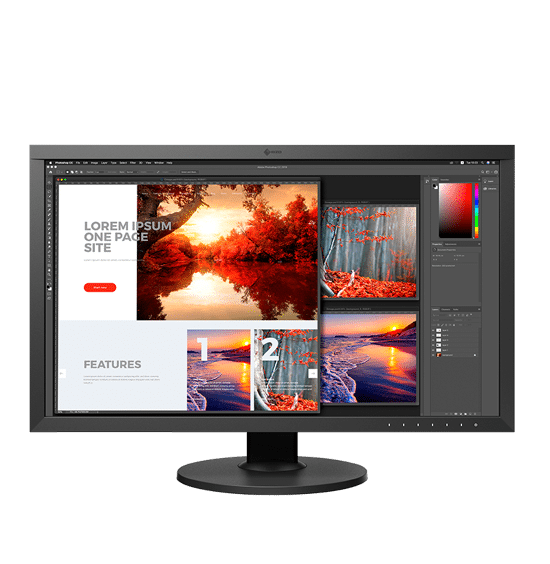Top 10 trends in print to watch in 2025

Two months into 2025, several new trends have begun to emerge, while others have carried over from the previous year. Here, Rob Fletcher showcases some of the key areas for print companies to focus on over the coming weeks and months.
Each year brings with it fresh, exciting trends and a host of new demands from customers, and this year is proving no different. Now two-months old, 2025 has thrown up numerous new focus areas for printers, while it is becoming increasingly clear some trends that dominated the previous year, or in some cases years, are continuing.
In this feature, we highlight some of the stand-out trends and talking points of 2025 so far and take a closer look at what this might mean for print companies around the world that are seeking to grow their business.
Diversification
Starting with a subject that has been at the very front of many printers’ mind in recent years, the need to diversify into new markets has never been so important. With print companies are facing increasing competition from other businesses, standing still is no longer an option.
 Credit: Image from Pixabay.
Credit: Image from Pixabay.
Printers need to consider looking outside of their traditional remit and explore areas that could offer growth opportunities, some of which feature later in our Top 10. Stand-out areas that could be worth a look include personalisation, packaging and wide-format.
However, before making the move, printing companies should ensure they have the right machinery and knowledge to do so. A visit to the FESPA Global Print Expo 2025 this May in Berlin will offer insight into new technologies and opportunities for diversification.
Personalisation
Picking up on one of these opportunities, demand for personalised print has continued to increase in 2025. Once regarded as a more specialist service, this is now offered by many printers, with consumers having easy access to all manner of products.
 Credit: Image from Pixabay.
Credit: Image from Pixabay.
However, such is the level of competition, it is important print businesses think outside the box and consider what they can offer that is different to what is already available on the market. Whether this is integrated cross-media technologies such as QR codes or even working with artificial intelligence (more to come in that later), there is plenty to explore.
With that in mind, the Personalisation Experience 2025 will help open visitors’ eyes to what can be achieved with personalisation in print.
Packaging
Linking in heavily with personalised print is packaging, which, when used together, offer all manner of opportunities to printers. To focus on packaging on its own, there has been an increasing call for paper-based packaging in recent years, and this shows no signs of slowing down in 2025.
 Credit: Image from Pixabay.
Credit: Image from Pixabay.
The primary reason for this is the environment; paper-based packaging offers brands a much more planet friendly option than plastics, with materials such as cardboard having far less impact on the world around us. Consider adding this to your offering and work with clients to open their eyes to sustainability by making the move from plastic to paper-based.
Sustainability
Continuing the theme of sustainability, this is a trend, and indeed demand, that will almost certainly continue for many years. To put it simply, you need to be offering a planet friendly service, or you could lose profitable business from customers that place great value on where their print comes from.
 Credit: Image from Pixabay.
Credit: Image from Pixabay.
The term ‘sustainability’ often brings with it a sense of uncertainty; most printers want to be more environmentally friendly but have little knowledge of how to do so. Experts on this field suggest the best way to start is taking small steps and build up to large-scale changes.
This could be anything from adding recycling bins to the cafeteria or break room or consider investing in one or two electric vehicles. All this will make a difference to your sustainability.
Artificial intelligence
Having touched on this earlier, artificial intelligence, or AI if you rather, looks set to play a major role not only in print but also other industries and indeed day-to-day live in years to come.
 Credit: Image from Pixabay.
Credit: Image from Pixabay.
AI is already active in print and, given the increasing uptake of solutions and technologies that use AI, we will only see more of this in the print industry. On this, it is important to ignore headlines in the mainstream media with threats of the “robots taking over” and people losing their jobs; the reality is AI can help print business grow in the long-term.
Automation
Tying in with AI is automation, with this having significantly improved production across the print industry in recent years. Again, there were fears that this could led to job losses, but instead, it has helped to free up workers for other jobs, allowing companies to become quicker and more efficient.
 Credit: Image from Pixabay.
Credit: Image from Pixabay.
Speak with your suppliers and manufacturer partners to find out more about their latest offerings in terms of automation. Again, a visit to the FESPA Global Print Expo 2025 in May will allow you to connect with some of the leading brands in the global print sector.
Cross media
Again, a subject that crosses over into several fields in our Top 10, cross media – using print in collaboration with other technologies – is becoming more commonplace. The obvious choice in this area is QR codes, which remain a highly popular choice, but the fact is that many more opportunities are available.
 Credit: Image from Pixabay.
Credit: Image from Pixabay.
Some printed applications integrate hidden, scannable codes to open up more content to the consumer, while some pieces are printed around other technologies such screens and audio speakers. Think outside the box to see how cross media can open up new work.
Cloud integration
On the subject of new technologies, integration with the cloud is now becoming something of a must for print companies if they are to compete in the modern, increasingly digital market.
 Credit: Image from Pixabay.
Credit: Image from Pixabay.
To put it simply, cloud integration connects different cloud-based applications and systems together, allowing them to share data and work collaboratively. This effectively creates a unified digital landscape for an organisation, helping to improve efficiency across the board.
Speak with your software partners for more information about integrating with the cloud.
Print security
However, by evolving your business and connecting with the digital world, this presents new issues that printing companies need to consider. More businesses are taking steps to boost security and protect their systems from cybersecurity.
 Credit: Image from Pixabay.
Credit: Image from Pixabay.
Over the past year, there were plenty of examples of major data breaches, which caused all manner of headaches for the victims of these attacks. This year, demand for online security is expected to increase significantly as businesses – both in print and elsewhere – seek to put in place the latest protection software to protect themselves from cyber criminals.
Hybrid working
Concluding our Top 10 with a trend that has become increasingly apparent since the dark days of Covid-19. More people are now adopting hybrid working, whereby they split their time between the office (or print room) and the home office.
 Credit: Image from Pixabay.
Credit: Image from Pixabay.
While once somewhat frowned upon, hybrid working is now very popular, offering a more flexible way of working to staff and, as several studies have shown, can lead to more productivity. Of course, this is not applicable to all staff, but for those that can work just as well, or even more effectively, from home, it may worth be giving this a go in 2025.
As we progress through 2025, more trends will almost certainly become apparent and shape the way printers operate. It is up to print companies to ensure they have the technologies, systems and people in place to respond and continue to deliver a high-quality service to customers.
Discover the latest innovations in wide format printing, packaging and software at FESPA Global Print Expo 2025, Europe's leading print and signage exhibition taking place from 6 - 9 May at Messe Berlin, Germany. It will showcase the most innovative products, visionary concepts, and latest developments in the future of print. Register to visit here and use promo code FESJ501 to pay only 25 euros for your entrance ticket.
Interested in joining our community?
Enquire today about joining your local FESPA Association or FESPA Direct
Recent news

Kernow Coatings to showcase innovative solutions at FESPA 2025
Kernow Coatings will showcase innovative, sustainable wide-format printing solutions at FESPA 2025. Highlights include a collaboration with Ricoh for a space-themed booth, featuring KernowJet MetaliK and Interiors Structured Silver. They'll also present recyclable wallcoverings and PVC-free media, emphasizing high-performance, eco-friendly options.

Understanding the differences and similarities between monitor and RBG Device ICC Profiles
Paul Sherfield explores the the intricacies of RGB monitor profiles and RGB device profiles, uncovering the challenges and considerations that we can face in the colour management field face daily.

European Sign Expo: Where Visionaries Meet
In under one month’s time, sign makers and visual communications specialists will congregate at European Sign Expo 2025 to see the latest technology developments and trends across the sign industry.

From Imagination to Fabric: Exploring Generative AI with ROQ and Printbox
ROQ and Printbox's upcoming session at SmartHub Conference at Personalisation Experience will demonstrate real-time AI-powered t-shirt personalisation. Attendees will be able to create designs with AI, printed live on ROQ's DTG printers. This will showcase the power of combining generative AI with on-demand printing, revolutionising customer experience and apparel customisation.